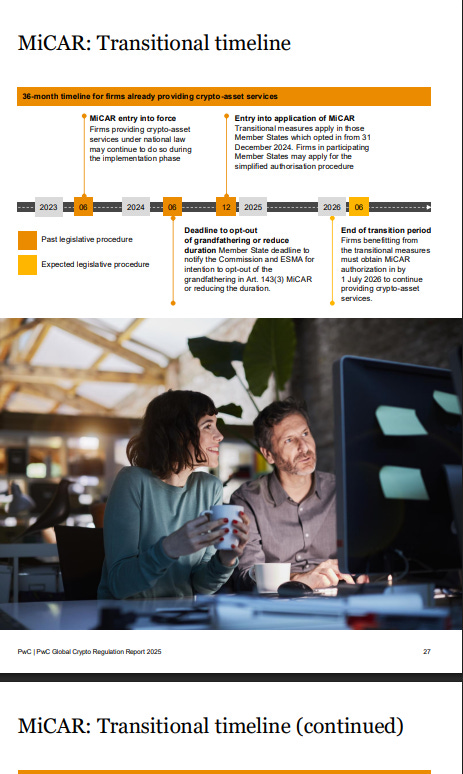How Stablecoins Will Go Mainstream by 2026: Simple Guide to the Future of Digital Money
What Are Stablecoins and Why Everyone Will Use Them by 2026: A Simple Guide to the Future of Digital Money, Trends, Timelines, and Predictions
Ready to see how stablecoins go mainstream in 2026? Let’s explore it.
First, I hope you know that numbers don't lie. Stablecoins are currently having their moment. The market cap exploded to $252 billion by mid-2025, with projections pointing toward, $400 billion by year-end. This isn't just another crypto bubble; it's the foundation of a financial infrastructure shift that's been years in the making.
2025 marks the inflection point at which stablecoins transition from crypto trading tools to mainstream financial infrastructure. Three forces are converging: regulatory clarity through landmark legislation, enterprise adoption by Fortune 500 companies, and seamless tech integrations that make digital dollars as easy to use as Venmo.
The thesis is straightforward: mainstream adoption will not occur through DeFi speculation or crypto trading. Instead, it's unfolding through three core use cases: cross-border payments that slash fees by 70%, remittances that settle in minutes instead of days, and corporate treasury management that generates yield while maintaining liquidity.
I guess you are ready to see exactly how this plays out. Let's dive into the regulatory tailwinds pushing this transformation forward.
Regulatory Tailwinds Accelerating Adoption
The game changed completely when Congress passed the GENIUS Act in July 2025—the first major crypto legislation in U.S. history. This isn't regulatory theater; it's a comprehensive framework that makes stablecoins as legitimate as traditional banking products.
The GENIUS Act and U.S. Leadership
The legislation is a masterclass in balanced regulation. The Act requires 1:1 backing with full transparency, mandating that only banks, credit unions, and approved nonbank institutions can issue stablecoins. This eliminates the Wild West dynamics that scared away institutional players for years.
Banks can now issue stablecoins directly, meaning JPMorgan's digital dollar experiments are no longer edge cases; they're the new normal. The regulatory framework encompasses everything from reserve requirements to anti-money laundering compliance, providing traditional finance with the legal certainty it has been demanding.
Global Frameworks: EU's MiCA, Asia's Push, and Beyond
The U.S. isn't operating in isolation. Europe's Markets in Crypto-Assets (MiCA) regulation creates similar frameworks for cross-border stablecoin use, while Hong Kong and Singapore are building crypto-friendly regulatory sandboxes. This coordinated approach means stablecoins can flow seamlessly across major financial centers.
Meanwhile, emerging markets are writing their own playbook. Nigeria has seen $22 billion in stablecoin transactions, accounting for 43% of sub-Saharan Africa's cryptocurrency activity. These markets aren't waiting for perfect regulation; they're solving real problems with inflation and cross-border payments right now.
Impact on Institutional Entry
The regulatory clarity is already paying dividends. PayPal is offering a 3.7% annual yield on PYUSD, while Visa and Mastercard are integrating stablecoin rails into their payment networks. Traditional banks aren't just watching from the sidelines; they're actively building stablecoin products.
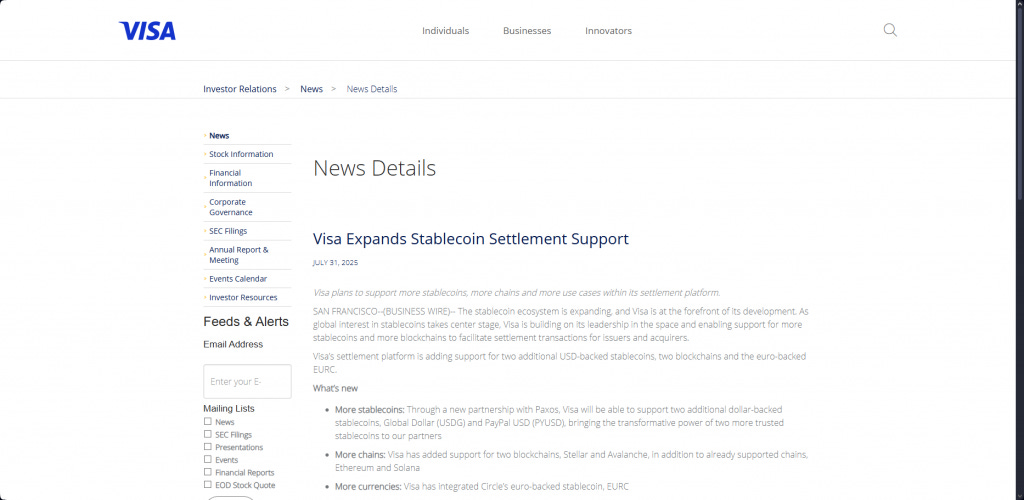
The risk reduction is tangible. Regulatory compliance means fewer depeg events, stronger reserve auditing, and institutional-grade custody solutions. For users, this translates to confidence that their digital dollars will actually be worth a dollar tomorrow.
With regulations creating the foundation, let's examine the sectors where explosive growth is already happening.
Key Sectors Where Adoption Will Explode
The stablecoin market isn't growing in a vacuum; it's expanding because real businesses are solving actual problems. Daily settlement volumes are tripling toward $300 billion, driven by use cases that make traditional finance look slow and expensive.
Understanding Cross-Border Payment Mechanics
Before diving into specific adoption sectors, it’s crucial to understand how stablecoins fundamentally change cross-border payments. Traditional international transfers require correspondent banking relationships, currency conversions, and multiple intermediaries. Stablecoins eliminate these friction points by creating a global, 24/7 settlement layer that operates independently of traditional banking hours and relationships.
Payments and Commerce Revolution
Enterprise adoption is accelerating rapidly. Shopify merchants are experimenting with USDC payments to reduce credit card fees from 3% to under 1%. Amazon's pilot programs with PYUSD are showing similar cost savings for cross-border transactions. When the economics are this compelling, adoption becomes inevitable.
The payment infrastructure is maturing too. Layer-2 solutions like Base and Optimism are processing thousands of transactions per second at a cost of pennies per transaction. This isn't theoretical; companies are already processing millions in stablecoin payments monthly.
Remittances and Emerging Markets
Here's where the human impact hits hardest. Traditional remittance services charge fees of 6-8% and take 3-7 days for settlement. Stablecoin remittances cost under 1% and settle in minutes. For families sending money home, this difference is life-changing.
The growth numbers tell the story: global remittance volume grew 21.7% in 2025, with stablecoins capturing an increasing share. Nigeria leads Africa with massive adoption, but similar patterns are emerging across Latin America and Southeast Asia.
Treasury Management and Yield Generation
Corporate treasurers are discovering stablecoins aren't just payment tools—they're yield-generating assets. Yield-bearing stablecoins like USYC have attracted over $12 billion in deposits by offering returns that traditional money market funds can't match.
The appeal is obvious: maintain dollar liquidity while earning yields of 4-6%, with the flexibility to deploy capital instantly for operations or opportunities. For companies with international operations, stablecoins eliminate foreign exchange risk and settlement delays.
DeFi and RWA Integration
Real World Assets (RWAs) are gaining traction through stablecoin infrastructure. Over $723 million in RWAs have been issued on Aptos alone, representing a range of assets, from treasury bonds to real estate exposures.
The interoperability story is crucial here. Cross-chain bridges enable stablecoins to flow seamlessly between Ethereum, Solana, and Layer 2 networks. This creates a unified liquidity pool that supports everything from decentralized finance (DeFi) lending to traditional financial products.
Here’s a noteworthy insight: Over 50% of institutions plan to adopt stablecoin by 2026, based on recent surveys from major consulting firms.
The foundation is set, but timing matters. Let's map out exactly how 2026 unfolds quarter by quarter.
Step-by-Step Timeline: How 2026 Unfolds
Adoption doesn't happen overnight, but the timeline is accelerating faster than most people realize. Here's how mainstream stablecoin use is actually expected to roll out across 2026.
Q1-Q2: Regulatory Rollouts and Early Pilots
The GENIUS Act implementation is set to kick into high gear in early 2026. Major banks receive stablecoin issuer licenses, with Bank of America and Wells Fargo launching pilot programs for commercial customers. These aren't small experiments—we're talking billion-dollar reserve backing from day one.
Walmart's branded stablecoin program is set to launch in Q2, enabling customers to pay with digital dollars at checkout and earn cashback rewards. The integration is seamless, scan a QR code, the payment settles instantly, and the receipt shows up on your phone. This is the Amazon Prime moment for stablecoins.
Q3: Enterprise Scaling and Tech Integrations
The real breakthrough comes when stablecoin payments integrate directly into messaging apps. WhatsApp's pilot in Brazil allows users to send USDC as easily as sending a photo. Similar integrations launch across Telegram, Signal, and native payment apps.
Cross-chain adoption explodes during this period. Solana processes over $50 billion in monthly stablecoin volume, while Ethereum Layer 2s handle the lion's share of commercial transactions. The user experience becomes chain-agnostic; most people won't even know which blockchain they're using.
Q4: Mass Adoption Metrics and Milestones
By year-end 2026, the market capitalization will exceed $ 500 billion. More importantly, usage metrics show real adoption: 15% of CFOs accept stablecoin payments, over 100 million people have used stablecoins for remittances, and daily transaction volume exceeds $400 billion.
The tipping point indicators are everywhere: stablecoin yields surpass those of money market funds, major retailers offer stablecoin-exclusive discounts, and the term "digital dollar" becomes as common as "credit card" in financial conversations.
Reference studies from Circle, Coinbase, and traditional consulting firms, such as McKinsey, all point to similar timelines. The convergence of regulatory clarity, enterprise adoption, and technical maturity creates a perfect storm for mainstream adoption.
However, growth this rapid comes with its own challenges. Let's address the risks honestly.
Challenges, Risks, and Mitigation Strategies
Rapid growth breeds risks, and stablecoin adoption won't be a smooth ride. Depeg events, regulatory scrutiny, and security exploits could derail momentum if not properly managed. Here's what could go wrong and how the ecosystem is preparing.
Regulatory Hurdles and Compliance Burdens
Even with the GENIUS Act, regulatory implementation creates compliance costs. Smaller issuers face expensive auditing requirements, potentially consolidating the market around major players like Circle and Paxos. This could lead to reduced competition and innovation in the long term.
International coordination remains complex. A stablecoin that is legal in the U.S. might face restrictions in the EU or Asia, creating a fragmented user experience. The recent USD0++ depeg event showed how quickly confidence can evaporate when regulatory uncertainty emerges.
Security and Market Risks
Bridge hacks and smart contract exploits pose ongoing threats. The Shibarium bridge hack cost users millions and highlighted vulnerabilities in cross-chain infrastructure. As stablecoin usage grows, these systems become more attractive targets for sophisticated attackers.
Market concentration is another concern. USDT dominates with a $158.9 billion market cap, creating systemic risk if Tether faces regulatory or operational challenges. Diversification across multiple stablecoin issuers becomes critical for ecosystem stability.
Competition and Fragmentation
The battle between fiat-backed stablecoins (USDC, USDT) and synthetic models (DAI, FRAX) is intensifying. Each approach has trade-offs: fiat-backed coins offer stability but require traditional banking relationships, while synthetic models provide decentralization at the cost of complexity.
Interoperability challenges could fragment liquidity across different chains and protocols. Without seamless cross-chain experiences, users may become locked into specific ecosystems, thereby reducing the network effects that drive adoption.
The market outlook remains optimistic: Even accounting for these risks, the trajectory toward a $500 billion market cap by 2026 appears sustainable. Risk mitigation through insurance funds, diversified reserves, and robust technical infrastructure is improving rapidly.
Bulls on adoption or bears on risks, what's your take?
The challenges are real, but they're solvable. Smart stakeholders are already building mitigation strategies. Here's your playbook for navigating this transition.
The Playbook: Actionable Steps for Stakeholders
Theory is useful, but execution matters. Whether you're building products, investing capital, or running enterprise operations, here's how to position for the stablecoin adoption wave.
For Builders and Startups
1. Integration Strategy First: Build stablecoin payments into your product from day one. Utilize battle-tested infrastructure, such as Circle's APIs or Coinbase Commerce, rather than developing your own solutions. Focus on user experience—most people shouldn't need to understand the mechanics of blockchain.
2. Yield and Cross-Border Focus: The highest-growth opportunities combine yield generation with cross-border functionality. Consider remittance apps with built-in savings accounts or e-commerce platforms that offer stablecoin cashback rewards.
3. Compliance as Competitive Advantage: Regulatory compliance isn't overhead, it's a moat. Early investment in KYC/AML infrastructure and partnership with licensed stablecoin issuers creates sustainable competitive advantages.
For Investors and Users
1. Diversification Strategy: Don’t put all digital dollars in one stablecoin. Spread holdings across USDT, USDC, and emerging options like PYUSD. Monitor yield opportunities—some stablecoins offer APYs of 4-10% through legitimate protocols.
2. Track Volume as Signal: Daily transaction volume matters more than market cap for predicting adoption. When the volume consistently exceeds $300 billion daily, mainstream adoption accelerates.
3. Geographic Arbitrage: Stablecoin adoption varies dramatically by region. Early adoption in emerging markets often predicts trends in developed markets by 6 to 12 months.
For Enterprises
1. Treasury Pilot Programs: Start small with 5-10% of cash reserves in yield-bearing stablecoins. Use established providers, such as Circle or Paxos, rather than experimental protocols. Measure cost savings on international payments and fund transfers.
2. Payment Integration Roadmap: Begin accepting stablecoin payments for B2B transactions, then expand to consumer-facing products. The cost savings on cross-border transactions alone justify the technical integration costs.
3. Partnership Strategy: Partner with licensed stablecoin issuers rather than building internal solutions. The regulatory compliance and infrastructure requirements are complex and evolving rapidly.
90-Day Adoption Sprint Challenge:
Day 1: Assess current payment infrastructure and identify stablecoin integration opportunities
Day 30: Complete pilot program setup with chosen stablecoin provider
Day 60: Process first transactions and gather user feedback
Day 90: Scale successful use cases and integrate learnings into broader strategy
We've read dozens of stablecoin adoption playbooks from Circle, Coinbase, McKinsey, and PWC, so you don't have to. The common thread is to start small, focus on real use cases, and build compliance into the foundation.
Whether you are ready to dive deeper into the stablecoin ecosystem or are interested in continued learning
Join CanHav's beta platform for data-driven stablecoin insights
Follow stablecoin Discord communities for real-time adoption metrics
Monitor $250B+ daily volume as the key adoption signal
Preparing for the Stablecoin Era
The transformation is already underway. 2025 marked the shift from stablecoins as crypto trading tools to foundational financial infrastructure. Regulatory clarity through the GENIUS Act, combined with explosive enterprise adoption and a mature technical infrastructure, creates the perfect conditions for mainstream adoption.
The opportunity is massive—a market that is growing from $252 billion to $500 billion in 18 months. Miss this inflection point, and watch others ride the wave while traditional payment systems become increasingly obsolete.
The next phase focuses on yield strategies, cross-chain optimization, and enterprise treasury management. These aren't theoretical concepts; they're active investments and business opportunities happening right now.
What's your stakeholder role?
Drop a comment, and we’ll send you specific resources tailored for builders, investors, or enterprises.
This analysis is for informational purposes only and does not constitute financial or legal advice. Do your own research (DYOR) before making investment decisions. Stablecoin markets involve risks, including potential loss of principal, regulatory changes, and technical vulnerabilities.
Subscribe to CanHav for deep dives on stablecoin yield strategies, crypto investing frameworks, startup playbooks, and AI x crypto convergence. We turn crypto noise into actionable decisions for founders, investors, and serious builders.
Also, join our beta platform for real-time stablecoin metrics, funding flow tracking, and treasury optimization tools. The mainstream adoption wave is building,position yourself to ride it.
About CanHav: We publish data-backed playbooks and build dashboards for founders, PMs, treasury/ops teams, and serious investors. Our focus areas include stablecoins, RWAs, and derivatives. Our newsletter drives the narrative; our beta platform tracks funding, liquidity, RWA supply/yields, as well as treasury operations.





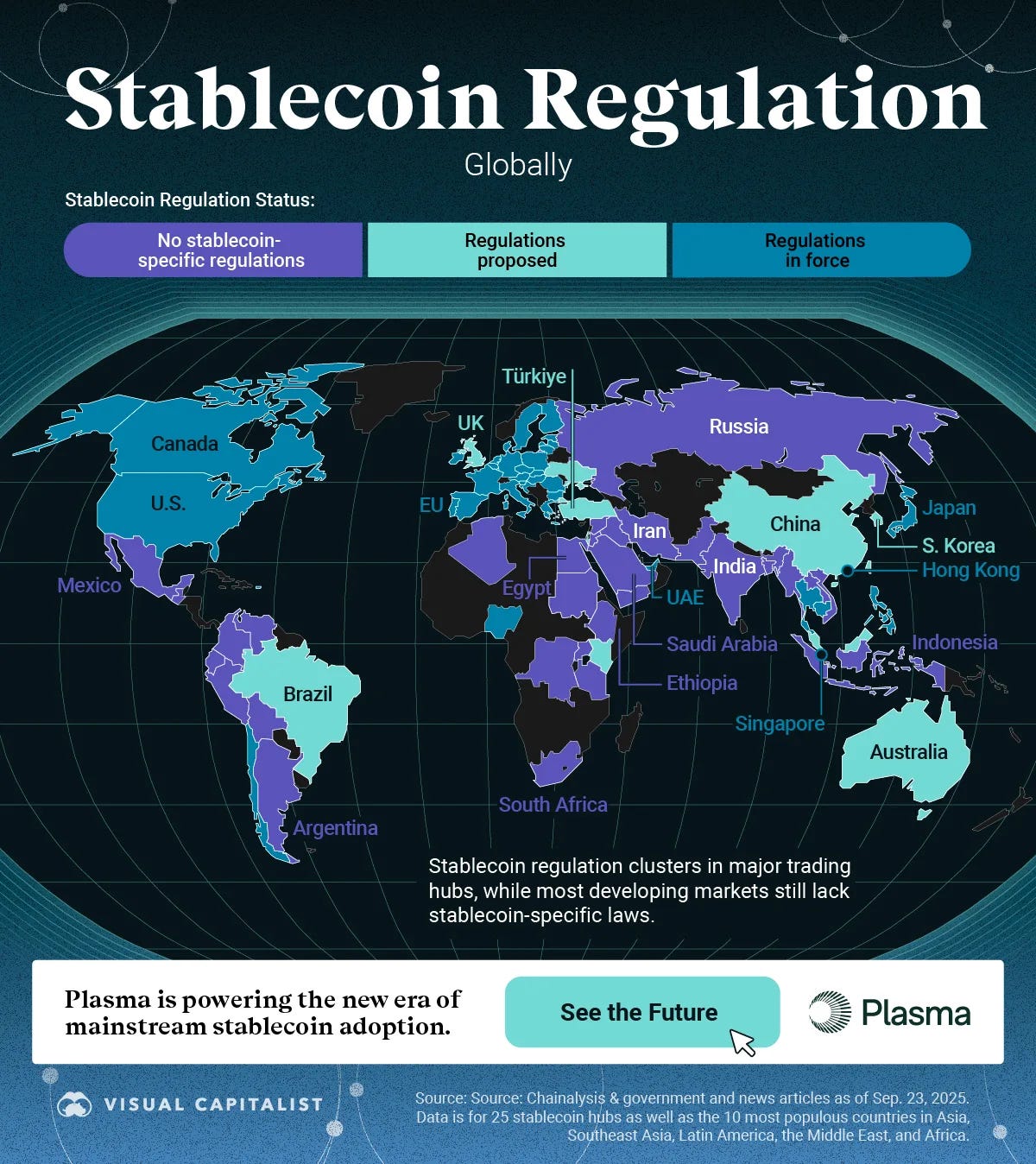

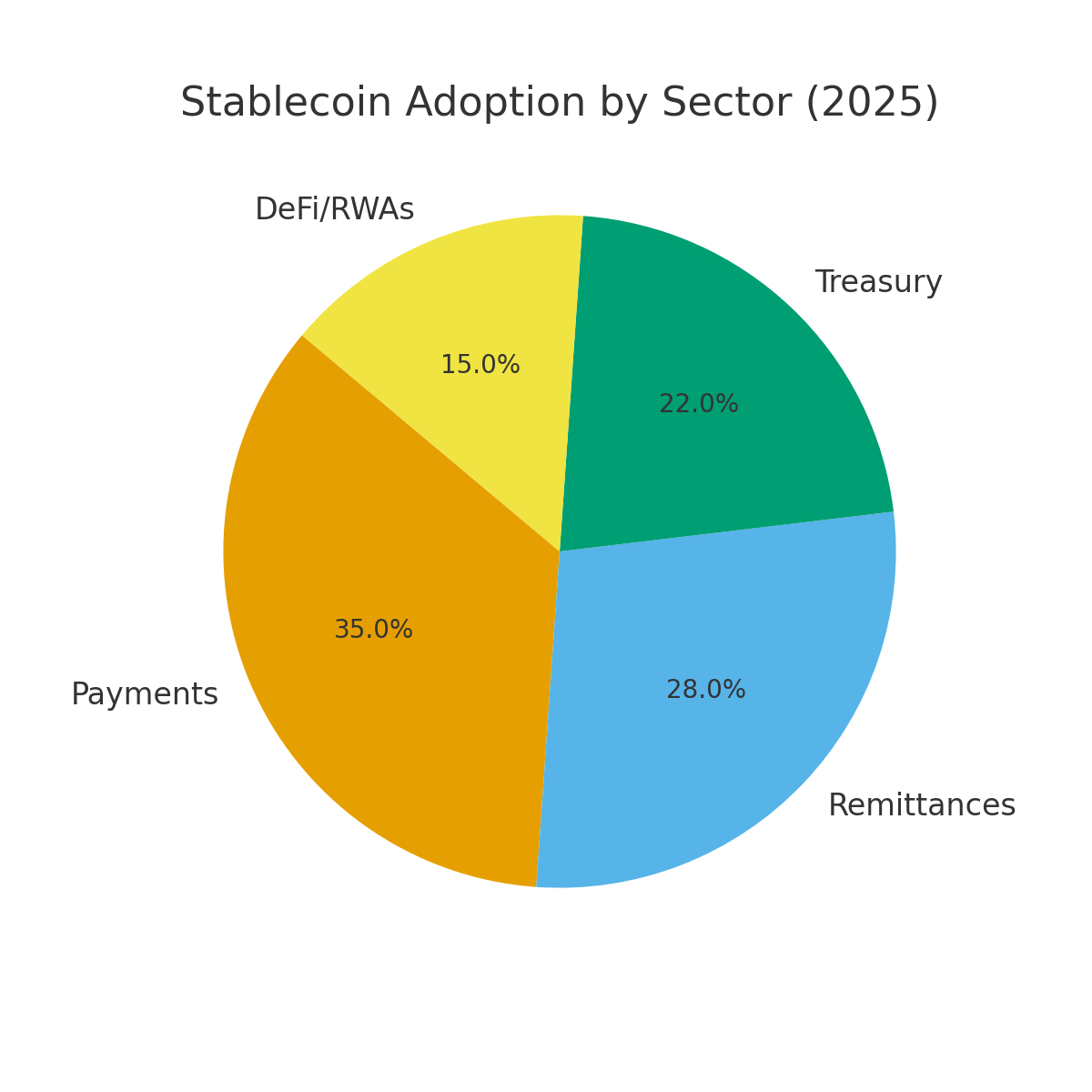
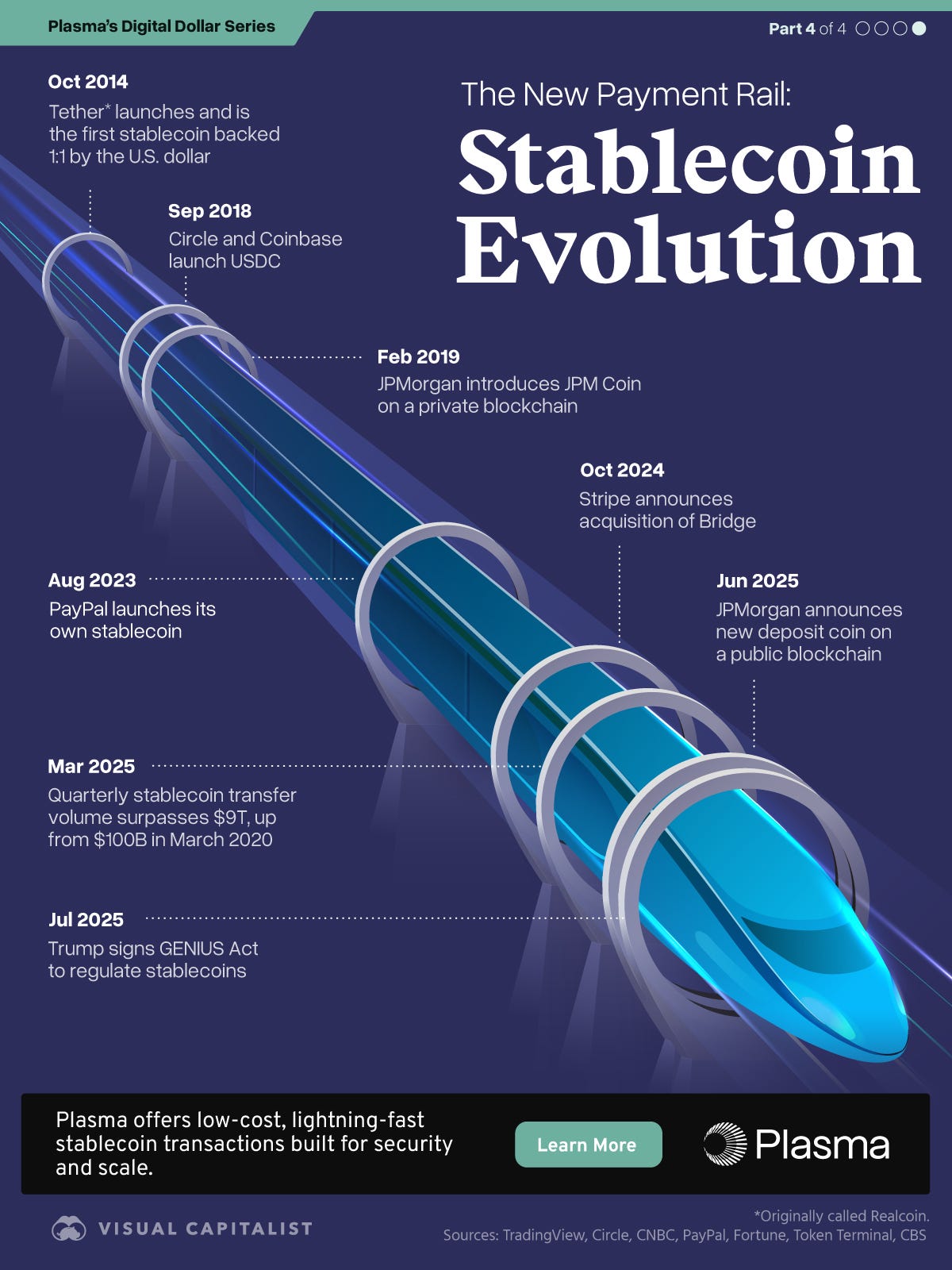
![Screenshot from DeFiSafety's stablecoin security scoring system showing vulnerability categories and mitigation strategies] Screenshot from DeFiSafety's stablecoin security scoring system showing vulnerability categories and mitigation strategies]](https://substackcdn.com/image/fetch/$s_!d5qF!,w_1456,c_limit,f_auto,q_auto:good,fl_progressive:steep/https%3A%2F%2Fsubstack-post-media.s3.amazonaws.com%2Fpublic%2Fimages%2F6a857e74-e237-473e-a596-59ae42df440a_1761x876.png)
